Today AMD launched its new Ryzen 7000 series processors along with its 5nm Zen 4 architecture and had some interesting insights into its next-gen series slated for release about a month from now.
AMD Ryzen 7000 Series Launch
First off, the new AMD Ryzen 7000 series incorporates the new Zen 4 cores on a 5nm process. It also largely catches up to Intel’s Alder Lake in adopting PCIe Gen5 and DDR5, but it will exceed Alder Lake in other areas.
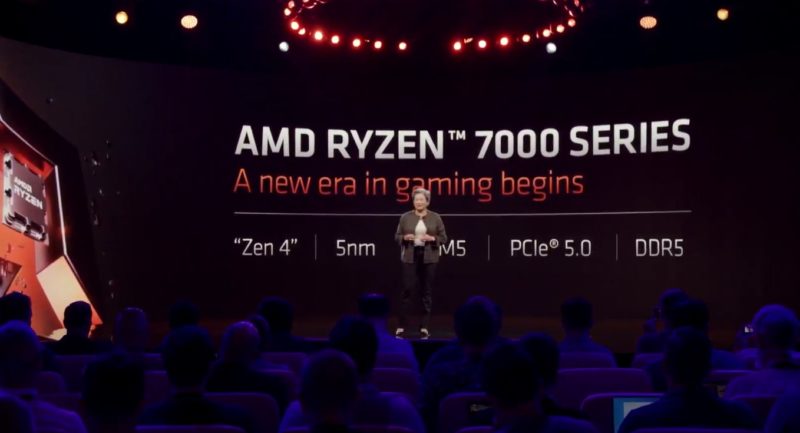
With Zen 4, AMD says it should get a 13% IPC uplift. Coupled with up to 5.7GHz single-thread speeds, it says it can get up to 29% more single-thread performance.
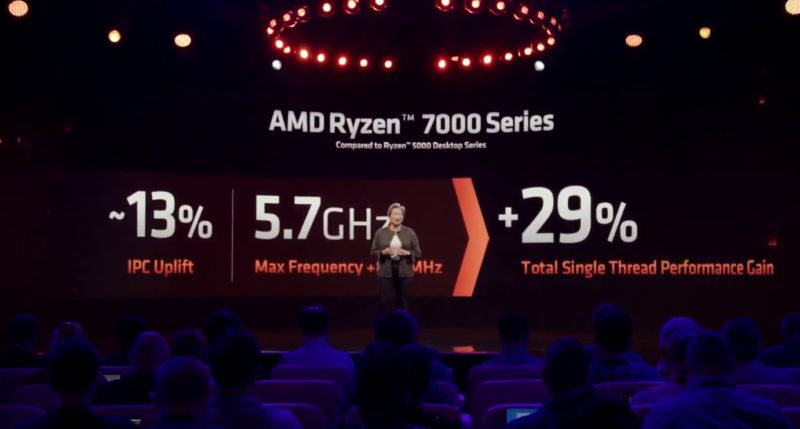
The AMD Ryzen 9 7950X has 16 cores, that 5.7GHz boost clock, plenty of cache, and a 170W TDP. Even with 5nm, TDPs will go up in this generation.
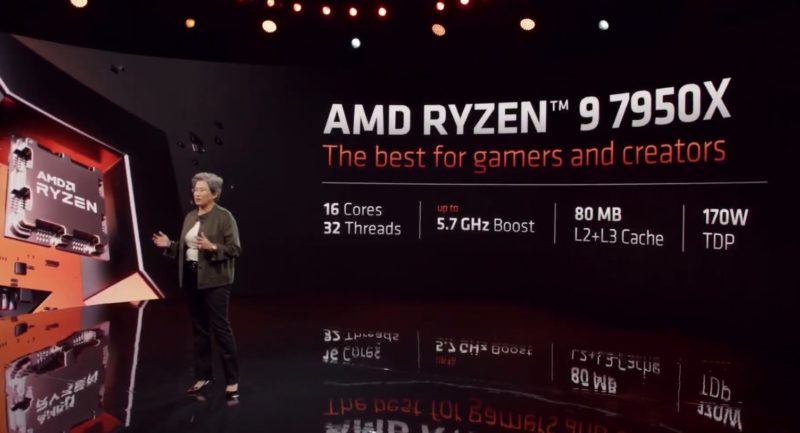
AMD says its new AMD Ryzen 9 7950X is faster than the Ryzen 9 5950X especially in content creator workloads. It is mostly focused on rendering apps not applications like Premiere Pro and others. Typically AMD Zen architectures do very well on rendering apps. As a funny aside when we did our ASRock Rack 3U8G-C612 8-Way GPU Server Review with 8x AMD FirePro W9100’s, AMD’s FAE told us that Blender was not a commonly used application that had little to no commercial appeal so AMD is not supporting it. Seven years later, AMD is using it along with three other rendering applications to show its next-generation performance.
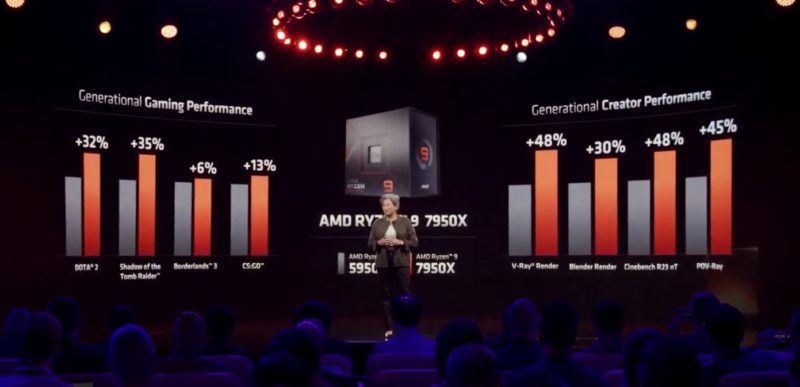
AMD also says it is faster than the current, soon to be previous, generation Alder Lake chips.
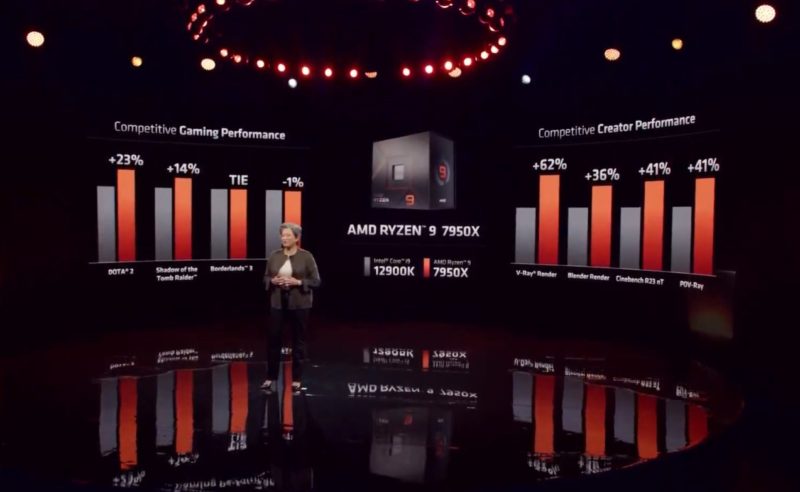
AMD’s next-gen chip is also expected to be more power efficient and faster than Intel’s current generation chip (but Intel will be launching soon enough before 2023’s Meteor Lake.
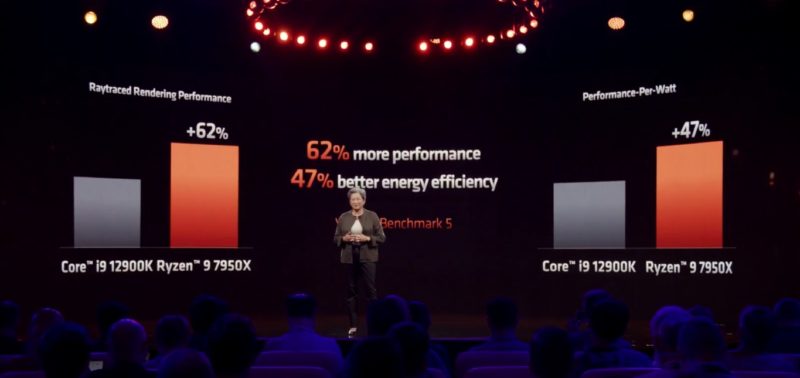
Here is the SKU stack. While AMD is getting a lot more performance, even the AMD Ryzen 5 7600X is now a 105W TDP part.
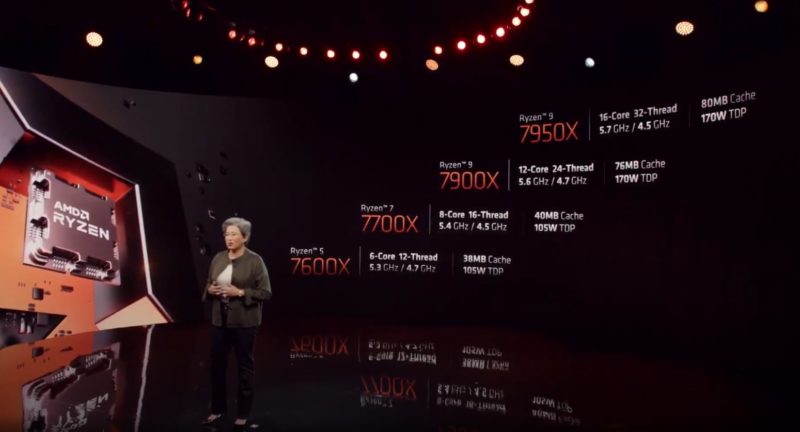
AMD says that the Ryzen 5 7600X should be about equal to the Intel Core i9-12900K on some workloads, but these are different than the workloads it showed in the above comparisons, so we assume these are hand-picked.
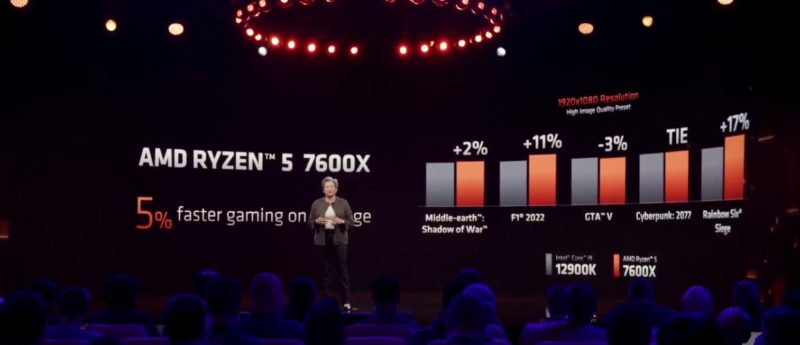
Next, AMD went into its Zen 4 architecture.
AMD Zen 4 Architecture Update
AMD says its 2022-2023 era Zen 4 architecture will offer 13% IPC with a new front end design and AVX-512 on 5nm.
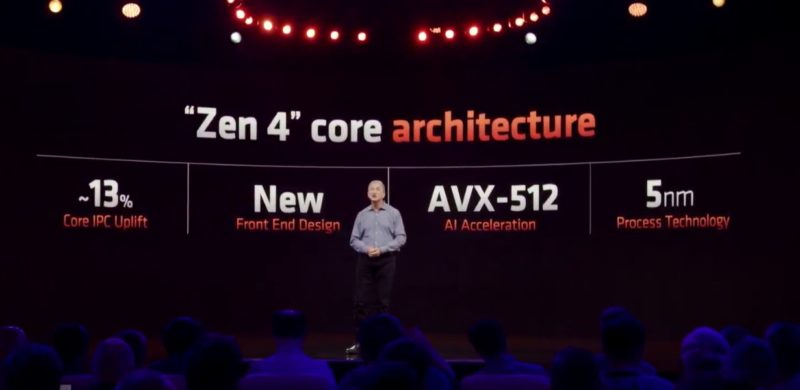
Here is how AMD came up with 13% IPC gains with a geomean at 4.0GHz and 8C 16T.
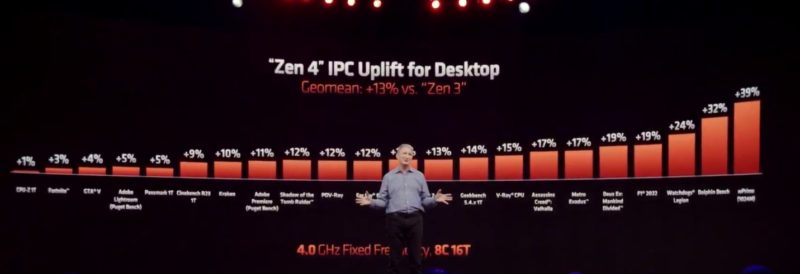
AMD says the big IPC contributor is the new front end, but then there are other parts that make up the 13% overall increase.
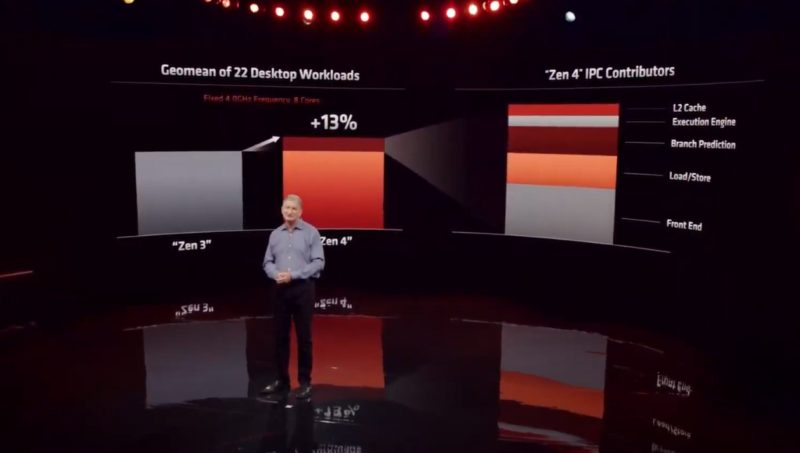
Perhaps the big one is AVX-512 support. What was a bit strange here is that AMD was touting “AI + HPC” on its desktop CPUs. It was also using AI inference using FP32 and Int8. Perhaps the exciting thing on the server side is that AVX-512 and VNNI will bring AMD’s architectures closer to the Ice Lake generation of Xeons in these areas. This is AMD’s strategy, let Intel pioneer new instructions, then follow up with AMD support later. We covered this in More Cores More Better AMD Arm and Intel Server CPUs in 2022-2023.
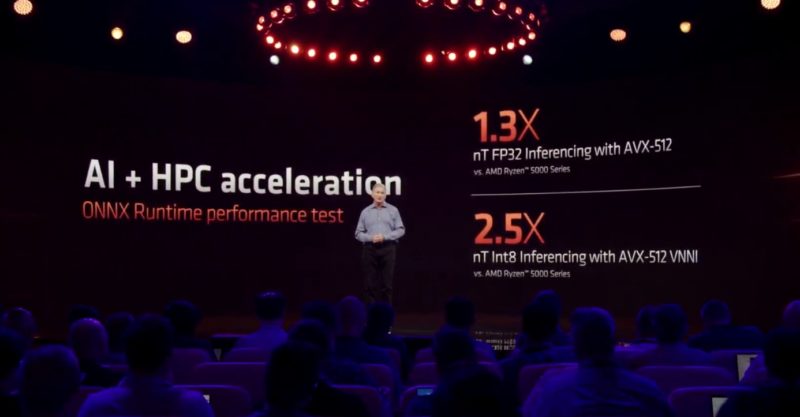
Die area for the core was reduced by 18% even with adding the new transistors for things like AVX-512. This is in no small part due to the transition to TSMC 5nm.
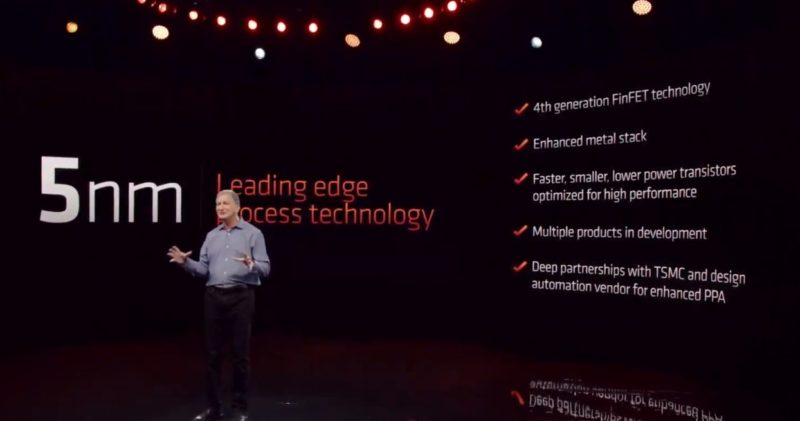
AMD says Zen 4 should offer lower power at the same performance or more performance at the same power.
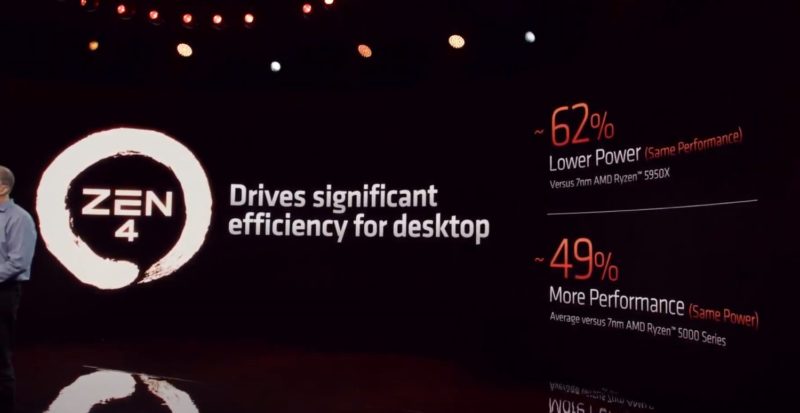
It seems the biggest power improvements are at lower TDPs. So for the 65W Project TinyMiniMicro nodes, this should be a big benefit to performance.
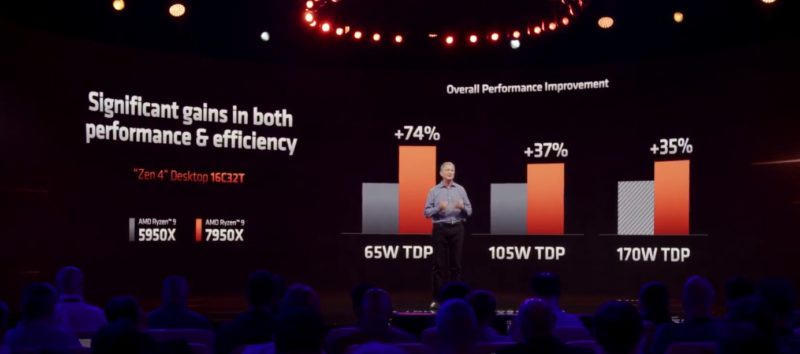
AMD says it does not need efficient cores because its cores will be smaller than Intel’s current P-cores as it transitions to 5nm. On many consumer CPUs, like the Apple M2 and more, the die area of the CPU cores is actually relatively small compared to the other parts of the SoC.
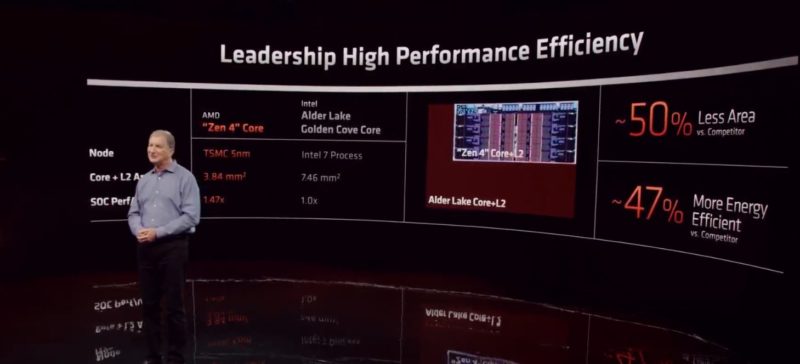
AMD says it has a roadmap to Zen 5 on 4nm and 3nm.
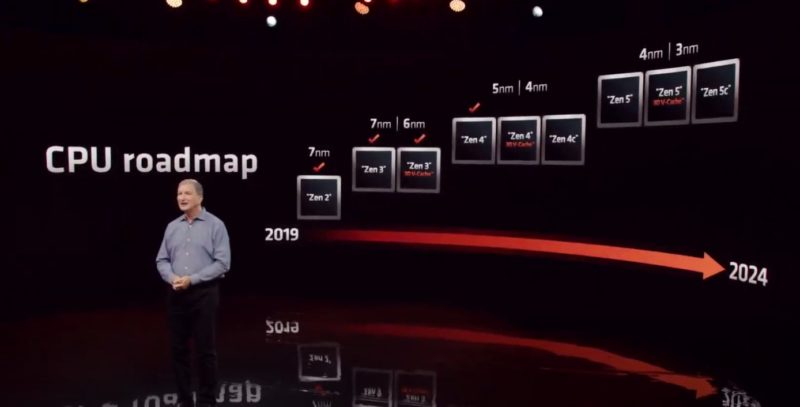
Next, the company discussed the new AM5 platform.
AMD AM5 Platform
The AMD AM5 platform talk discussed how AMD kept AM4 for a long time.
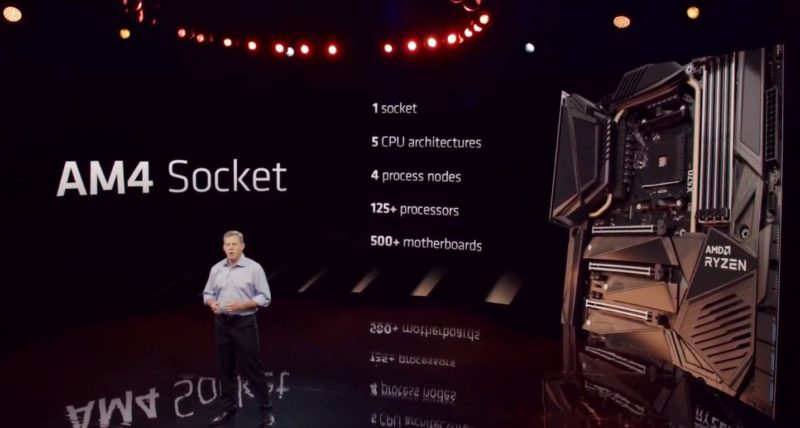
The new AMD AM5 platform uses a LGA1718 socket and can push up to 230W. It also supports DDR5 and PCIe Gen5 with some important caveats.
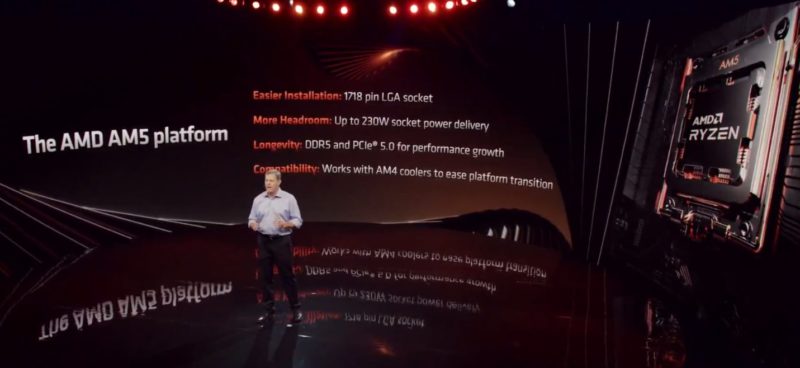
The X670 Extreme will have PCIe Gen5 to graphics and storage. The X670 has PCIe Gen5 just to storage. The B650 Extreme has similar capabilities with PCIe Gen5 graphics and storage and the non-extreme just to storage.
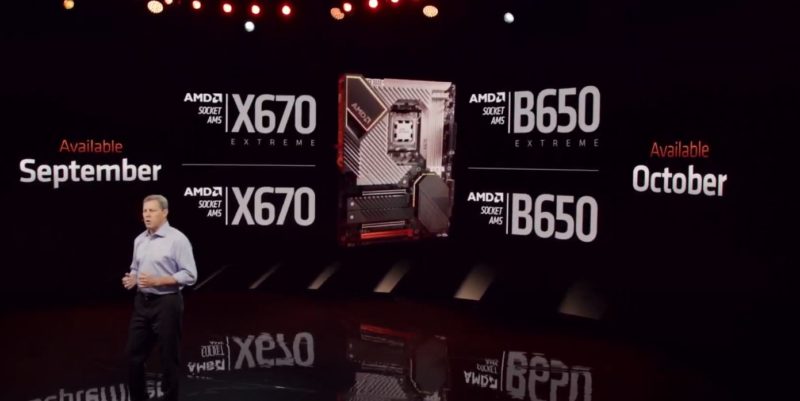
At FMS 2022 a few weeks ago, the floor was littered with Intel Alder Lake platforms running PCIe Gen5 devices. There were even Sapphire Rapids systems on the show floor. We asked why there were no pre-production AMD systems, and we were told that the Intel PCIe Gen5 platforms were further along. Also, with the X670/B650 only supporting PCIe Gen5 graphics on the Extreme edition, one has to wonder why AMD could not deliver a fully PCIe Gen5 platform across the board. It costs more to handle PCIe Gen5 signaling, so that may be a reason, but whereas AMD has typically led, this feels like a letdown. At the same time, the SSD vendors all told us they were validating controllers, and designs on Alder Lake so they were comfortable with consumer and data center SSDs on Intel PCIe Gen5 controllers, but they were more skeptical about AMD PCIe Gen5 controllers. That may be a situation that resolves itself with the AM5 launch and is just a byproduct of Alder Lake being in the market so much earlier with PCIe Gen5.
DDR5 support is in this generation as AMD adds support for the newer generation memory standard.
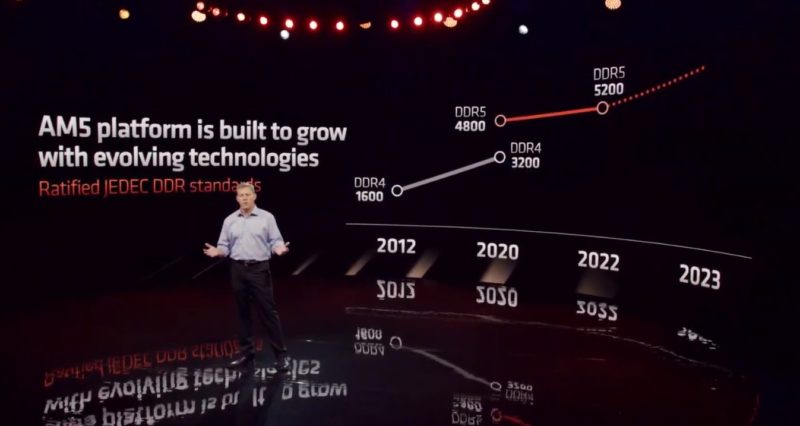
AMD will have EXPO Technology to help overclock memory.
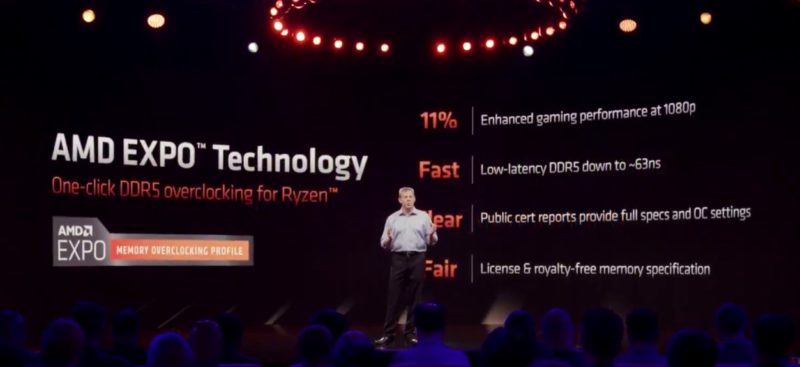
Still, we should see a very broad spectrum of motherboards. We see the $125 starting price here, but as we see with platforms like the ASUS STRIX Z690-E Gaming and Gigabyte X570 I AORUS PRO prices on boards can go up a lot from there.
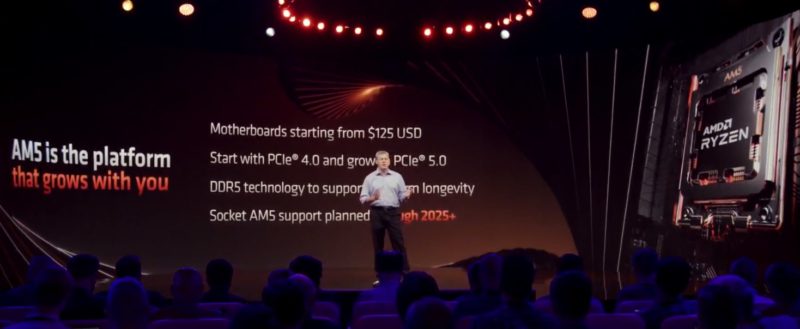
On the pricing side, the new X-series CPUs will range from $299 to $699 USD.
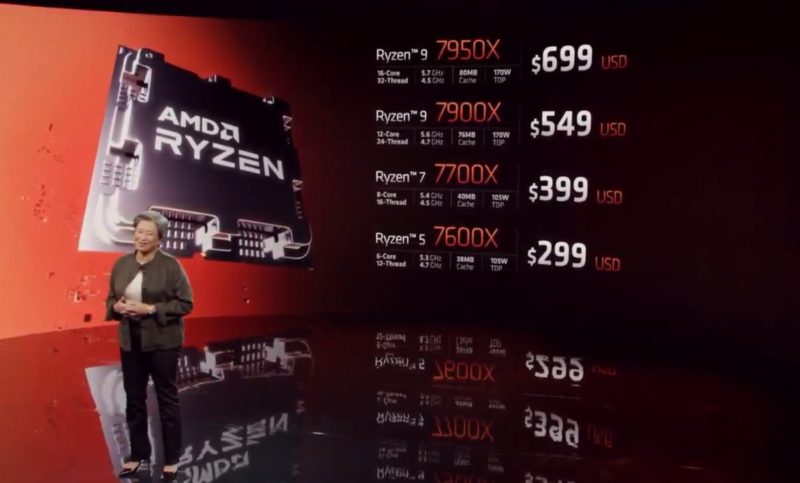
AMD says these will be available on September 27, 2022.
Final Words
The AMD Ryzen 7000 series is interesting indeed. We will have our coverage of the new series as we wrap up the current generation of small PCs based on the current-generation parts. Usually, it takes AMD some time to move lines to other markets like corporate desktop PCs and lower-power PCs. Still, the competition between Intel and AMD is heating up.

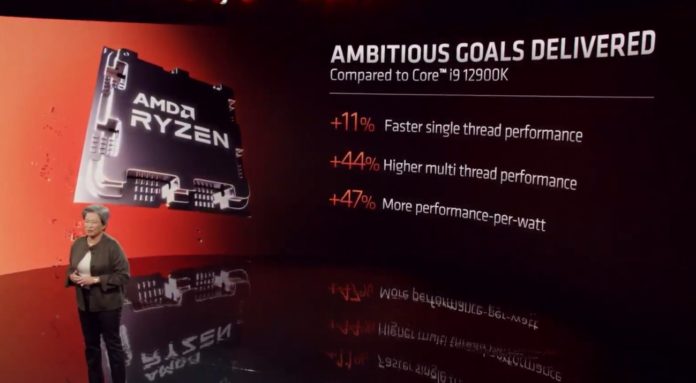
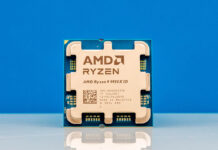
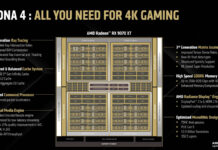

What kind of AVX-512 instructions Ryzen 7000 have ? It is nice to have AVX-512 FP16 instructions because now fp16 is everywhere and I’d like to process it with CPU core.
Some thoughts about PCIe5, PCIe4, GPUs and AMD/Intel platforms from a guy who does some GPU work training neural nets.
Platforms: A6000 and RTX38080/12G GPUs, Ryzen 5900X CPUs, X570 or B550 platform, DDR4 3200 CAS14 or CAS 16 RAM, pairs of either WD SN770 & Samsung 980 SSDs.
Training, eg, Googlenet & VGG & Resnet on images from 224×224 up to 300×300 one does not saturate an x8 PCIe4 link. One does not come close to it. It does not appear to be *possible* to saturate an x16 PCIe4 link. This is with shader utilization above 95% using prepared pre-cropped and pre-scaled images. The bottleneck is not any of the PCIe4 links & it is not the CPU, it is the GPUs.
So Intel’s Z690 platform, unless you buy the absolute top SKUs for enormous amounts of money, you always get a single gigantic x16 PCIe5 slot and sundry narrow x4/x3 slots.
Gigantic in the sense of providing oceanic scale bandwidth.
AMD’s AM5 ‘E’ series boards presumably will have a single such slot.
What is one supposed to stick in that x16 PCIe5 slot – an 800+ Gb/s NIC? What good is an x16 PCIe5 slot in a consumer product? For that matter what good is a pair of x8 PCIe5 slots if we are talking about whether the bandwidth can be used?
What we should be seeing is the CPU and GPU makers adjusting the products to the bus for the desktop: PCIe5/x8 GPUs not PCIe5/x16.
Fact is, PCIe5 is driven by the datacenter: by ultrafast networking and by the needs of CXL. The only reason we have PCIe5 showing up on the desktop is that neither Tweedledee nor Tweedledum wants to run two different product lines for the chips. PCIe5 x8 is overkill for a GPU. PCIe5 x16 is laughable overkill for a GPU.
** So if AMD is facing the fact that a board with a pair of CPU attached PCIe4 slots in x16/x0 or x8/x8 config offers a heck of a lot more utility to a consumer than one with a single x16 PCIe5 slot then more power to AMD. **
People who think that they need PCIe5 for their GPUs can spend extra money on the ‘E’ boards. People who for some reason need connect their desktop machines to 800 Gb/s networking can buy the ‘E’ boards. I think the people who understand something about what is going on inside their machine can save some money and buy the non-E boards.
Definitely agree with emerth. Unfortunately consumers latch onto bigger number = better for GPUs since it must increase FPS…which is already higher than the refresh rate of their monitors. Lane counts per slot really need to be reduced or allow splits at something other than 4,8,16. Even 8 lanes will be overkill.
But, greatest benefit of the pcie5x16 slot (in consumer grade boards) will be 4×4 bifurcation for NVMe. Gamers won’t need it. With threadripper likely going full pro line, it may be out of reach pricewise or unrealistic for many workloads. 16cores is easily enough for workloads that do not need 4+ RAM channels. Having more high bandwidth NVMe storage could be a huge benefit for large file workloads. With that, it would be really nice to see some boards with a lot of pcie5x4 slots instead.
@emerth
> What is one supposed to stick in that x16 PCIe5 slot – an 800+ Gb/s NIC?
If you were using your PC as a workstation, idea would be to bisect the 16X to two 8X which each would have the bandwidth of a 4th gen slot, one could power your GPU if its PCIe5 compatible, at full power, and the other could provide you with two more 12GB/s SSDs for video production or a SQL Database, whatever it is you use your workstation for.
The higher speed slots allows you to bisect more it while providing the bandwidth each task, requires. essential 24 PCIe5 lanes is 96 PCIe3 lanes or 48 PCIe4 lanes, with the right bisecting chips on the motherboard.
@Mike, the problem is that there aren’t many (any?) consumer devices that can make use of PCIe5 speeds. I’d rather have 32 PCIe4 links than 16 PCIe5. Nothing that a PCIe switch chip cannot fix but I doubt we’ll see any boards with such. If there are any PCIe5 switches at all.
@Mike
From what I know of consumer boards (AM4/5), they generally have extremely limited bifurcation support. At best I am finding onboard support for 4×4 lane split on the primary slot. This is intended for NVMe support and not much else. Rest of the splitting is allowing secondary slots to have lanes for 1 slot with x8 and a second with x8 and maybe a third with x4. But, within a single slot, its spotty at best. There are more active cards which handle bifurcation on the daughter board and then have sockets on a riser, but seem to be pretty small market and target miners more than anything else.
Server boards get far superior support for onboard bifurcation, from what I can gather. But haven’t tried since the last one of those I owned was for Opterons…
@Nikolay Mihaylov
Part of the scarcity is likely consumer cpu support for PCIe5. Its been available in limited instances for 1 cpu generation that came online a few months back. And that cpu line focused more on more on backwards capability for older tech including RAM type. So the market is tiny to non-existent for PCIe5 devices. That generation seemed more a debate of DDR4 or 5 than type of PCIe. With AMD adopting it and allowing PCIe5 NVMe slots, suddenly there is a lot of news for 5×4 NVMe drives becoming available soon. Its just a matter of a few months before more items will come online (though very expensive I imagine).
@Mike
You need two physical x16 slots (or an x16 and an x8, etc) in order to bisect. Z690 almost all boards ship with a single x16 slot, not two, so how are you supposed to bisect to x8/x8 or x8/x4/x4? In my O.P. I stipulated I expect AMD to do the same. If AMD stock PCIe5 board layout is a pair of x16 that support PCIe5 at x16/x0 or x8/x8, then that’d be wonderful.
I’ve not seen riser cables that let you turn a single PCIe4 x16 slot into 4 count x4 connections, or 2 count x8 connections. I really doubt we will see anything like that for PCIe5. Heck, even getting a pair of riser cables to work from a PCIe4 x8/x8 slot setup is really tricky, timing problems, usually the first-slot card actually malfunctions.
So, yeah, sure, but let’s see boards with slots that let you do this!
So is CXL support implicit in everything that’s PCIE gen5? or are consumer chipsets missing those features?
“At FMS 2022 a few weeks ago, the floor was littered with Intel Alder Lake platforms running PCIe Gen5 devices. There were even Sapphire Rapids systems on the show floor. We asked why there were no pre-production AMD systems, and we were told that the Intel PCIe Gen5 platforms were further along. Also, with the X670/B650 only supporting PCIe Gen5 graphics on the Extreme edition, one has to wonder why AMD could not deliver a fully PCIe Gen5 platform across the board. It costs more to handle PCIe Gen5 signaling, so that may be a reason, but whereas AMD has typically led, this feels like a letdown. ”
Uhhh… just what kind of ridiculously freaking misleading pile of utter Intel fanboy BS is this??? O_o
Intel’s LGA 1700 platform (aka Alder Lake [12th Gen] & Raptor Lake [13th Gen]) doesn’t even support simultaneous PCIe 5.0 graphics & storage AT ALL!!! Let ALONE having it be an optional upgrade like w/ AMD’s “Extreme” series of chipsets! So why all the biased as freaking hell complaining about ONLY AMD here?
Unlike AMD’s “PCIe 5.0 is possible to almost everything” AM5 platform, the M.2 storage & the DMI chipset links on LGA 1700 (aka, THE STUFF THAT ACTUALLY MATTERS FOR MORE BANDWIDTH) are STRICTLY PCIe 4.0!!! The ONLY PCIe 5.0 lanes you get are the 16x lanes to the primary PCIe card slot. Aka mostly only usable FOR GRAPHICS CARDS, WHERE IT’S MOSTLY WORTHLESS!
Just to add some additional rain on the PCIe5 parade, for storage you would need a CPU that supports encryption / decryption at those speeds and that would probably require a lot of threads or an accelerator. Unless of course you want to store your data unencrypted (perhaps fine for a gaming rig but not for anything used for work).